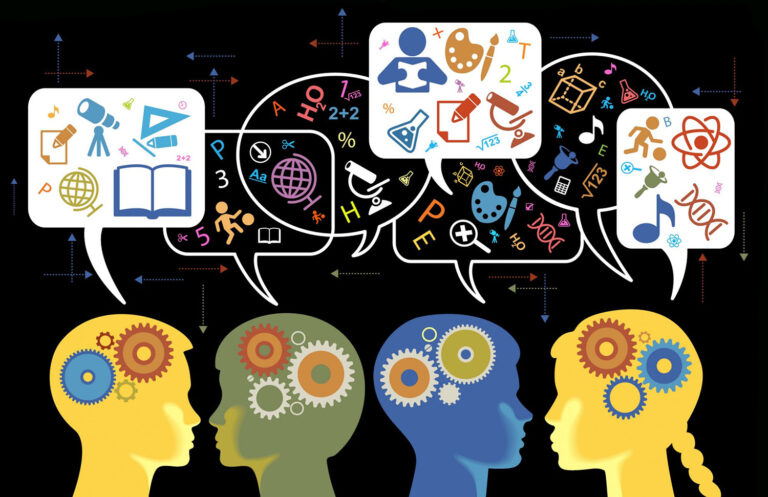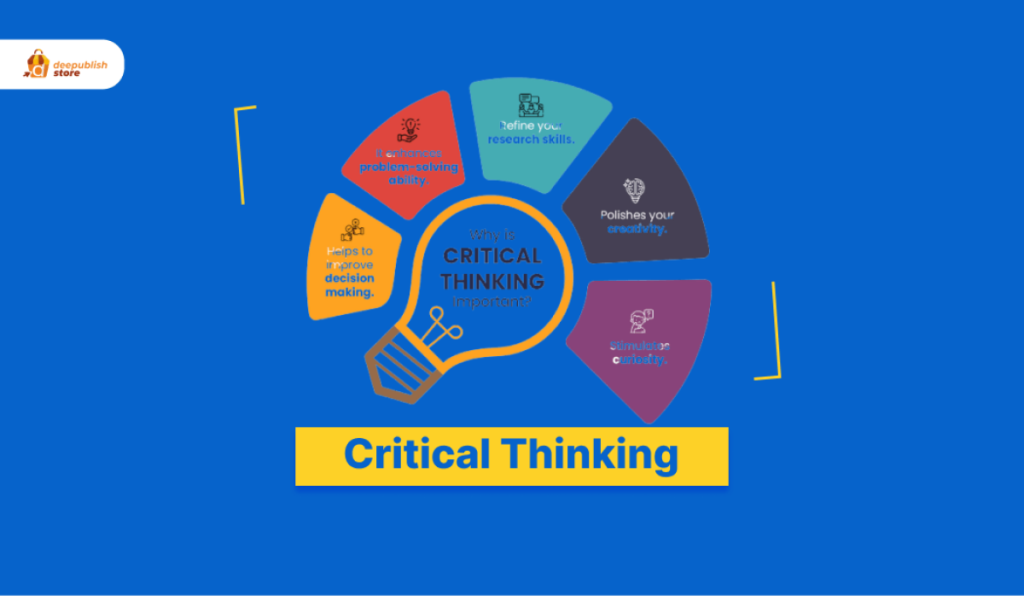In an era where information is abundant but truth is often obscured, the ability to think critically has become a fundamental skill for students. Whether evaluating news articles, solving complex problems, or making ethical decisions, critical thinking empowers students to analyze, question, and reason effectively.
However, many traditional education systems focus on memorization rather than deep analysis, leaving students unprepared for real-world challenges. Teaching critical thinking skills allows students to become independent thinkers, problem solvers, and informed citizens.
In this guide, we will explore:
- What is critical thinking, and why is it essential?
- The key components of critical thinking.
- Effective strategies for teaching critical thinking.
- Challenges in fostering a critical mindset.
- The future of education and critical thinking.
1️⃣ What Is Critical Thinking?
📖 Definition of Critical Thinking

Critical thinking is the ability to analyze, interpret, evaluate, and form reasoned conclusions rather than blindly accepting information. It involves:
- Questioning assumptions and biases.
- Weighing evidence and arguments critically.
- Identifying logical flaws and fallacies.
- Making well-reasoned, independent decisions.
Why It Matters:
- Prepares students for real-world problem-solving.
- Encourages curiosity and intellectual independence.
- Helps students navigate misinformation and biased narratives.
- Develops adaptability and logical reasoning for careers and daily life.
📌 Example: Instead of just accepting a historical event as written in a textbook, a student questions different perspectives, examines sources, and identifies possible biases in the narrative.
2️⃣ Key Components of Critical Thinking
Critical thinking is multifaceted, requiring students to develop various cognitive and analytical skills.
🔍 1. Analytical Thinking
Breaking down complex problems into smaller components.
Recognizing patterns, relationships, and inconsistencies.
📌 Example: Analyzing why a business failed by looking at financial, social, and economic factors rather than blaming a single cause.
🤔 2. Logical Reasoning
Using evidence and sound logic to support conclusions.
Recognizing logical fallacies and flawed arguments.
📌 Example: Evaluating a politician’s speech to determine whether their claims are supported by factual evidence or emotional manipulation.
🔎 3. Evaluating Evidence & Credibility
Determining whether information is credible, biased, or misleading.
Fact-checking and verifying sources.
📌 Example: Comparing multiple news sources to verify the accuracy of a breaking news story.
💡 4. Open-Mindedness & Creativity
Being willing to consider different viewpoints.
Thinking outside the box to generate creative solutions.
📌 Example: Debating the pros and cons of renewable energy rather than assuming one side is entirely correct.
⚖ 5. Ethical & Decision-Making Skills
Making choices based on logic, ethics, and fairness.
Recognizing the broader impact of decisions.
📌 Example: Evaluating the ethical dilemmas of artificial intelligence—should AI replace human jobs if it increases efficiency but causes mass unemployment?
3️⃣ Effective Strategies for Teaching Critical Thinking
How can educators foster deep thinking in students? The key is active learning, questioning, and real-world applications.
1. Encourage Socratic Questioning
Use the Socratic method—asking open-ended, thought-provoking questions.
Encourage students to defend their viewpoints with evidence.
Example Questions:
- “Why do you think this happened?”
- “What evidence supports your claim?”
- “What are the possible consequences of this action?”
📌 In Practice: A literature teacher asks students to analyze a novel’s character decisions and consider alternative outcomes.
2. Use Real-World Problems & Case Studies
- Introduce current events, ethical dilemmas, and case studies.
- Encourage students to debate and propose solutions.
📌 Example: In a science class, students debate the ethics of genetic engineering and propose guidelines for responsible scientific practices.
3. Teach Media Literacy & Fact-Checking
Train students to evaluate news sources, identify fake news, and recognize bias.
Use real-life media examples to develop critical consumption habits.
📌 Example: Students analyze social media posts and discuss how misinformation spreads online.
4. Foster Debates & Role-Playing Activities
Encourage students to argue for and against different perspectives.
Use historical reenactments or mock trials to encourage deep thinking.
📌 Example: A history class recreates a courtroom trial from a controversial event (e.g., the Salem Witch Trials) to explore bias and legal reasoning.
5. Assign Open-Ended Projects & Research Tasks
Encourage independent research and self-driven learning.
Allow students to explore topics that interest them.
📌 Example: Instead of a yes/no test, students create a multimedia presentation on climate change solutions, analyzing effectiveness and feasibility.
6. Use Puzzles, Games, & Brain Teasers
Encourage logical thinking through riddles, escape rooms, and board games.
Teach deductive reasoning and strategic problem-solving.
📌 Example: A math class introduces Sudoku, chess, or logic puzzles to improve problem-solving skills.
4️⃣ Challenges in Promoting Critical Thinking
Despite its benefits, teaching critical thinking is not always easy.
1. Overemphasis on Standardized Testing
Many schools prioritize memorization over analysis.
Solution: Incorporate project-based and inquiry-based learning.
2. Resistance to Challenging Beliefs
Students may struggle to consider viewpoints different from their own.
Solution: Create a safe space for respectful discussion and disagreement.
3. Lack of Teacher Training in Critical Thinking Instruction
Many educators were not trained to teach critical thinking explicitly.
Solution: Professional development programs on inquiry-based teaching.
5️⃣ The Future of Education & Critical Thinking
With the rise of technology, misinformation, and automation, critical thinking will become even more essential in the future.
🌎 1. AI & Digital Literacy
Students must learn how to assess AI-generated information.
Schools will teach algorithmic bias and ethical AI decision-making.
📌 Example: Students evaluate how AI tools shape social media feeds and political knowledge opinions.
🧠 2. Emphasizing Critical Thinking in All Subjects
Critical thinking will be embedded across disciplines, not just philosophy or debate classes.
STEM, humanities, and social sciences will all integrate deep analysis and questioning.
📌 Example: Math teachers encourage students to identify misleading statistics in news articles.
📖 3. Teaching Critical Thinking as a Lifelong Skill
The workforce increasingly values problem-solving over memorization.
Schools will shift towards lifelong learning models.
📌 Example: Students work on real-world projects, internships, and interdisciplinary problem-solving challenges.
Conclusion: Shaping the Thinkers of Tomorrow
Critical thinking is more than just a skill—it’s a mindset. By fostering inquiry, analysis, and reasoning, educators can equip students to navigate an increasingly complex world. The goal is not just to teach students what to think, but how to think.
💬 What are your thoughts on critical thinking in education? How can schools improve deep analytical learning? Share your ideas below! 🧠📚✨


